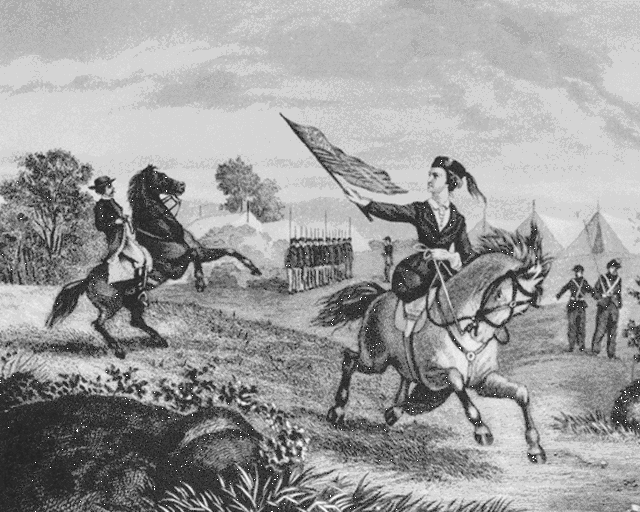Women's Suffrage in America: An Eyewitness History
Elizabeth Frost-Knappman and Kathryn Cullen-DuPont, Editors
From "Civil Wars: 1861-1865"
When the Civil War began in the spring of 1861, Elizabeth Cady Stanton and Susan B. Anthony had to make a decision: How should members of the women's movement respond? Elizabeth Cady Stanton thought that their activities should be discontinued during the war. She viewed this as a tactical move. It was a detour--but also a chance for women to prove their worth as citizens. The war "to preserve the Union," would become, she thought, a war to end slavery. The women's rights activists, many of whom had strong abolitionist backgrounds, would involve themselves in the Union cause, and their contributions as citizens would make it clear that they were entitled to the vote. Cady Stanton was sure of this.
Susan B. Anthony disagreed. If women, for whatever reason, stopped pressing their claim, their claim would be ignored. Women would get the vote, Anthony believed, only if they continued to demand it. It would not be granted as a reward for patriotism, valor or sacrifice. Susan B. Anthony was equally sure of her position.
Virtually all of the women's rights leaders shared Cady Stanton's viewpoint. Finally, when not one prominent women's rights leader aligned herself with Anthony, she acquiesced. The Albany women's rights convention of February 1861 would be the last for a while. Until the war ended, Anthony would put aside women's rights work as such and urge others to do the same. She would do what she could to aid the Union.
The efforts of women--on both sides of the war--began almost immediately....
Copyright 1992 by Elizabeth Frost and Kathryn Cullen-DuPont
